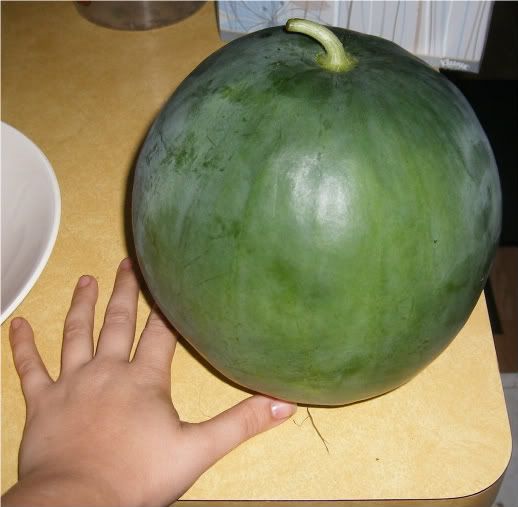
but i wasnt sure when to pick it. according to the advice i'd gotten on the internet, it *should* have been ripe...
it was 7.5" tall
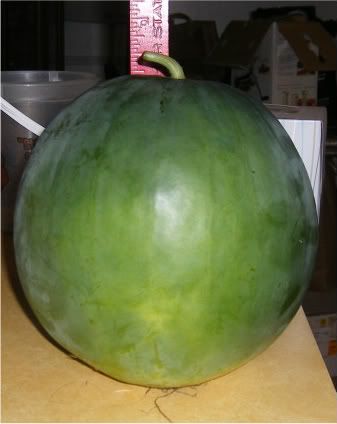
nearly 8" wide, and the bottom had turned a nice bright shade of yellow instead of being white
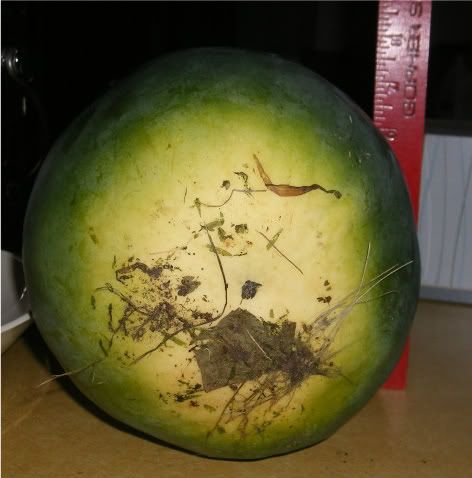
but it was not all the way ripe
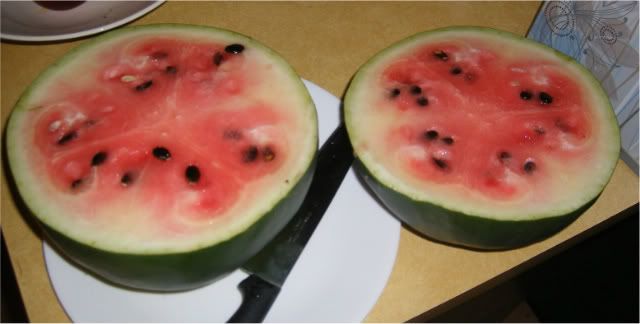
although it did still taste good
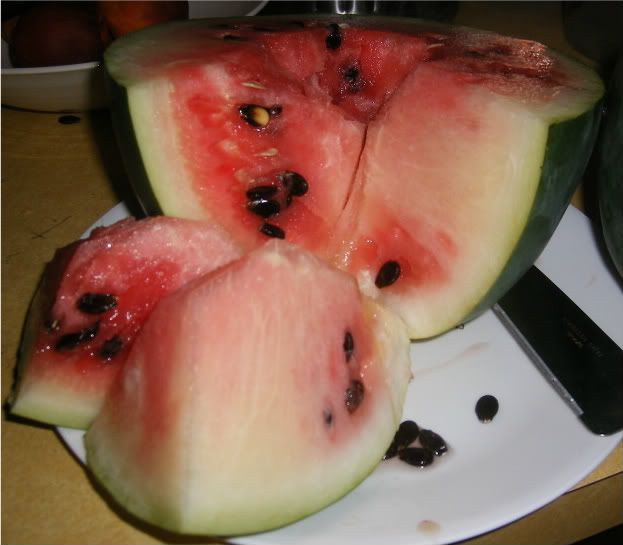
i think perhaps i need to keep track of how long the watermelon grows, maybe that would be a better indicator.
here is the info on how to tell when watermelon is ripe on the vine:
i'm finally having success with growing watermelons in minnesotas short growing season. however, i have no idea when to pick my watermelon off the vine. i got this helpful link in my email today from hudson valley seed library's website and thought i'd share: http://www.seedlibrary.org/wp/?p=1854
For watermelons, determining ripeness is much more difficult. There are four clues to look for:
1. A bright yellow spot where the melon rests on the ground. In yellow-skinned varieties, this spot will be whitish.
2. Detectable ribbing along the surface of the melon. When immature, the watermelon has smooth skin lacking a topography. As it ripens, the skin becomes an undulating landscape which can be detected by rubbing your fingers around the melon. The more distinct the ribbing, the riper the fruit.
3. A drum-like resonance when you knock the melon with your knuckles. You should be able to detect some reverberation–not just a dull thud.
4. The browning and wilting up of the tendril on the melon vine that is adjacent to the little stem leading to the ripening fruit. As the melon grows, this tendril looks green and curly; when the melon approaches peak ripeness, the tendril grows brown and shrivels from the tip down to the base. If the tendril is not fully withered, the melon is probably not fully ripe.
Once you’ve identified a fruit that meets all these criteria, wait a few more days (unless you are growing a variety with a thin rind, in which case prompt harvest is necessary to prevent splitting). In general, the longer you’re able to abstain from harvesting, the riper your watermelon will become. While regular melons will continue to ripen a little bit once harvested, watermelons stop dead in their tracks once you pull them off the vine. So, in nearly all circumstances, the longer you wait before harvesting, the better. When you do decide to harvest, cut the watermelon from the vine (it will not slip).
You’ll know as soon as you try to slice into a watermelon whether or not it’s ripe: a ripe watermelon will seem to pop open–as if to relieve inner pressure–as soon as the knife slits the skin.
No comments:
Post a Comment